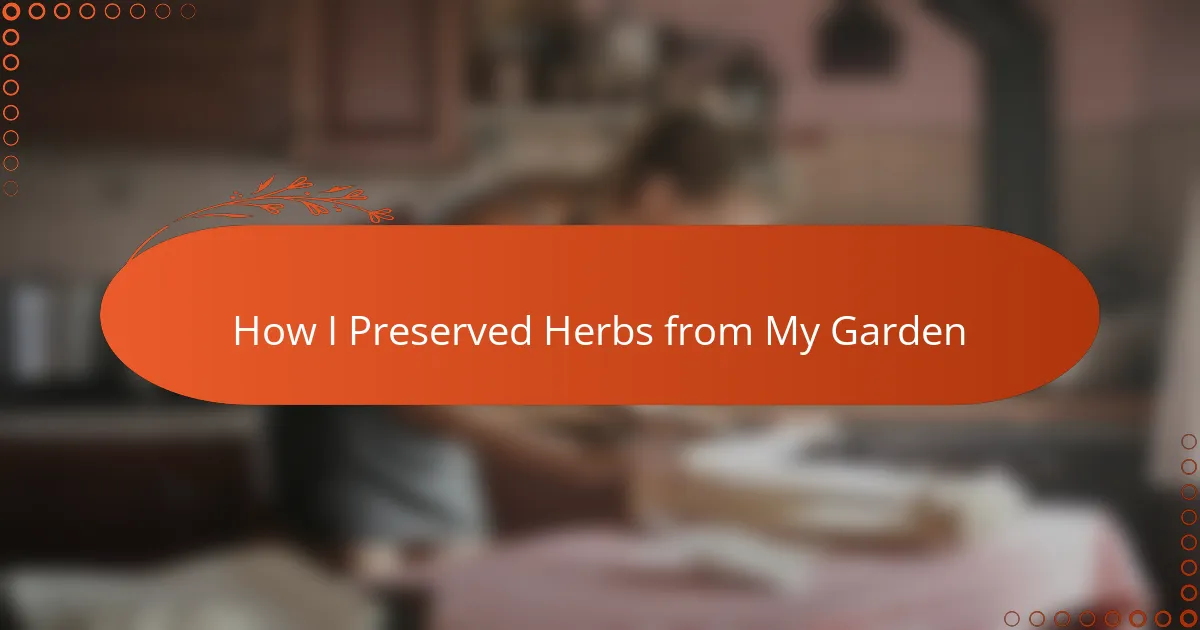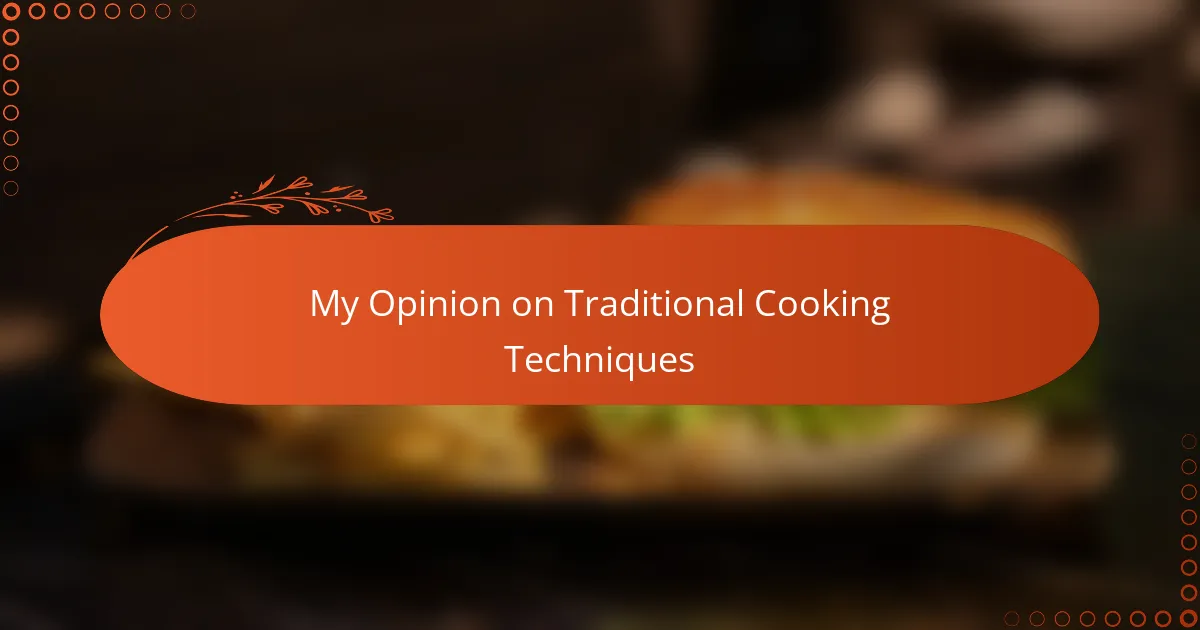Key takeaways
- Understanding the preservation methods tailored to specific herbs enhances flavor retention, with drying or freezing being the most effective approaches.
- Using proper tools, such as mesh drying racks and airtight glass jars, significantly improves the herb preservation process and outcomes.
- Harvesting herbs at their peak moisture content ensures better preservation, with careful timing in cooking maximizing their flavor impact.
- Creating herb-infused oils and vinegars not only preserves flavors but also elevates everyday meals with vibrant tastes from the garden.
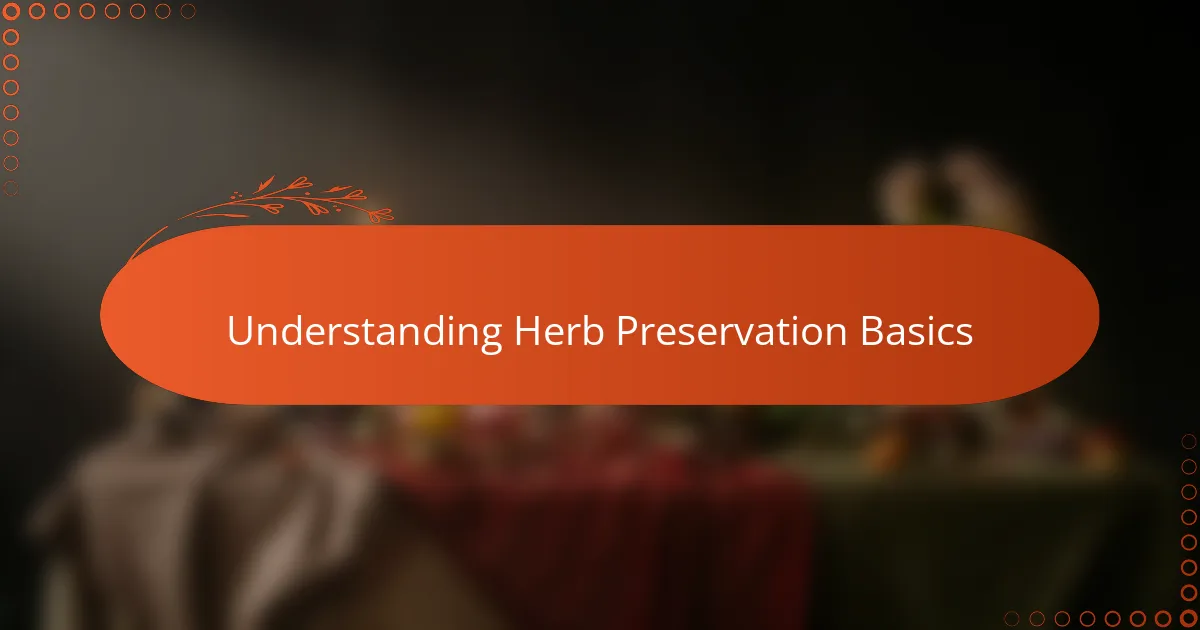
Understanding Herb Preservation Basics
Preserving herbs feels like capturing a bit of summer’s magic to enjoy year-round. I’ve learned that understanding the basics—like the right time to harvest and how moisture affects freshness—is key to making those flavors last. Have you ever wondered why some herbs retain their aroma better when dried, while others seem to lose their essence completely?
From my experience, knowing whether an herb is best dried, frozen, or stored fresh transforms the whole preserving process. It’s not just about saving the herbs; it’s about keeping their vibrant taste and potency intact. I found that treating each herb with the method it prefers makes a world of difference in my cooking later on.
What’s surprising is how simple it can be once you grasp these fundamentals. For instance, drying herbs like thyme or oregano slowly and in the right environment preserves their oils beautifully. This understanding has changed how I approach preservation, turning it into a rewarding ritual rather than a chore.
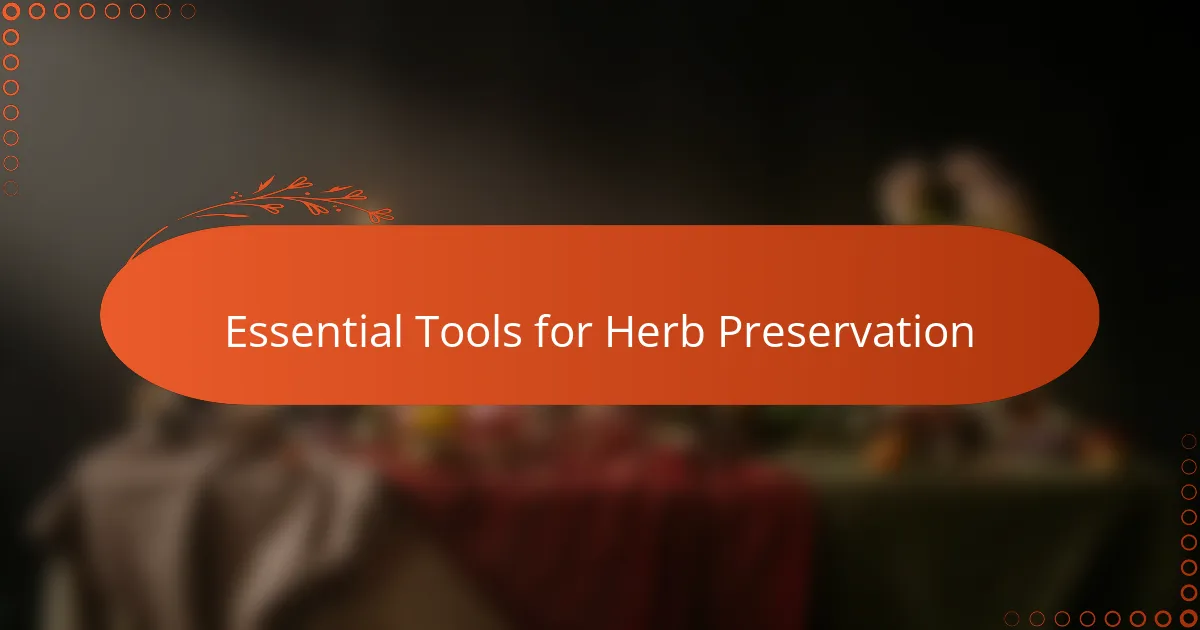
Essential Tools for Herb Preservation
Having the right tools truly makes herb preservation a joy rather than a hassle. I always reach for my trusty mesh drying racks—they let the air circulate around the herbs, helping them dry evenly without losing those delicate flavors. Have you ever tried drying herbs on a flat surface only to find some soggy leaves? These racks have saved me from that more times than I can count.
Another game-changer for me has been a good pair of kitchen scissors or herb shears. Snipping herbs cleanly instead of tearing them keeps the leaves intact, which I noticed helps preserve their oils better. Plus, it feels so satisfying cutting herbs with tools designed just for the job—it’s one of those little things that elevate the whole process.
And let’s not forget storage containers. After drying, I store my herbs in airtight glass jars—no plastic for me because it can trap moisture and dull the flavor. Finding the right jar with a tight seal gave me confidence that the herbs would stay fresh for months, which makes all the effort feel worthwhile when I open my spice cabinet. Do you have a favorite container that makes you excited to preserve and use herbs?
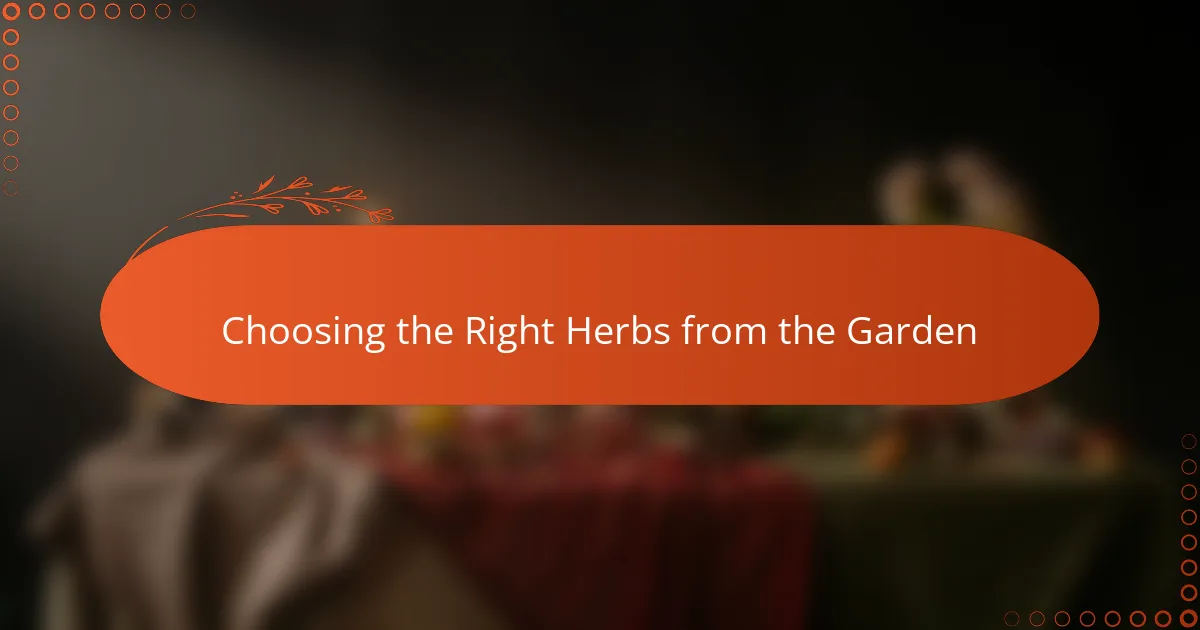
Choosing the Right Herbs from the Garden
When I go out to the garden, I don’t just grab any herb—choosing the right ones depends a lot on how I plan to preserve them. Have you noticed how some herbs like basil wilt too quickly, making them tricky to dry, while others like rosemary hold up beautifully? Picking herbs at their peak—when their leaves are vibrant and not yet flowering—has made a huge difference in the quality of my preserved stash.
Sometimes, I find myself drawn to herbs that have a robust aroma, knowing those scents tend to linger even after drying or freezing. Herbs like thyme and sage are my go-to because their flavors stay bold and fresh in my dishes, no matter the season. It’s almost like choosing your favorites before preservation sets the stage for future meals.
I also pay attention to the amount of moisture on the leaves before harvesting; wet or damp herbs rarely dry well and can spoil quickly. That little detail took me a while to notice, but once I did, my herb preservation outcomes improved dramatically. Have you ever picked herbs early in the morning when dew is still on them? Waiting until the leaves are dry feels so counterintuitive but has been a game-changer for me.
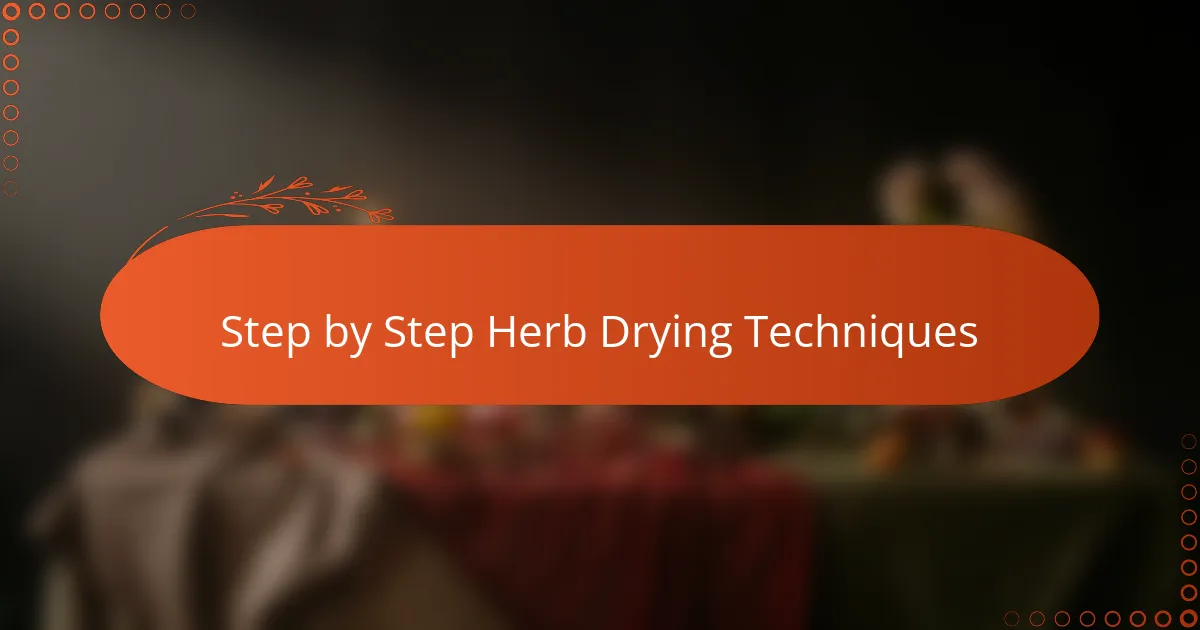
Step by Step Herb Drying Techniques
When I started drying herbs, my first step was always to tie small bunches together with a simple string. Hanging them upside down in a warm, dark place seemed old-fashioned at first, but I soon realized it’s one of the gentlest ways to preserve their oils and flavor. Have you ever noticed how herbs lose their charm when dried in direct sunlight? I learned that lesson the hard way.
Another technique I swear by is spreading herbs out on a mesh screen or rack, especially for more delicate leaves like basil or parsley. This method allows air to circulate evenly, preventing any damp spots that could cause mold—a problem I struggled with until I switched to this approach. The slow drying process, usually taking about one to two weeks, feels like a quiet waiting game, but it’s so worth the patience.
For herbs with thicker leaves, like rosemary or sage, I sometimes use my oven’s lowest setting or a food dehydrator. But I’m always careful to keep the temperature below 100°F (38°C) to avoid cooking the herbs, which can kill their fragrance. It’s a balancing act, but when done right, the results are incredible—a shelf full of fragrant, vibrant herbs ready to flavor every meal. Have you ever tried drying herbs in the oven? It surprised me how much control it gave me over the process.
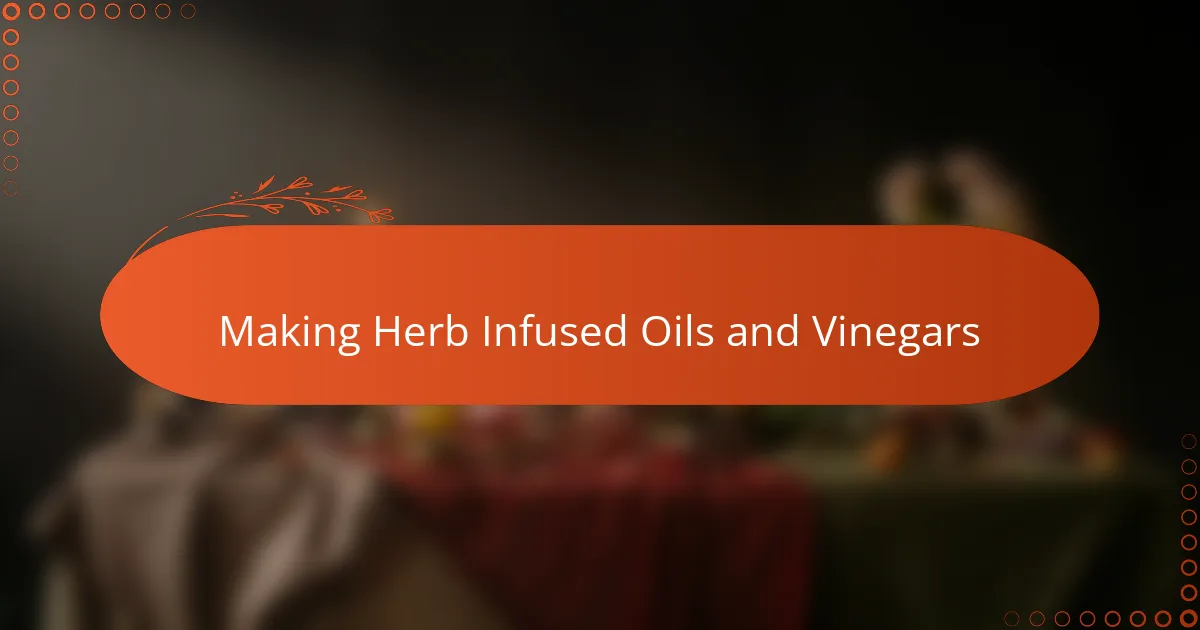
Making Herb Infused Oils and Vinegars
Making herb-infused oils and vinegars has become one of my favorite ways to preserve the vibrant flavors of my garden. I usually start with fresh herbs picked just before the infusion, since their lively aroma really transforms the oil or vinegar over time. Have you ever noticed how a simple drizzle of herb-infused oil can completely elevate a salad or roasted veggies? That’s the magic of preservation meeting everyday cooking.
I’ve found that patience is key here. It’s tempting to use the oil or vinegar right away, but letting it sit for at least a couple of weeks allows the herbs to release their full bouquet of flavors. Sometimes I check in halfway through and get excited by the evolving aroma—that anticipation makes using the finished product even more rewarding.
One tip I swear by is using clean, sterilized glass bottles and covering the herbs completely with oil or vinegar to avoid any chance of spoilage. This little step has saved me from frustrating batches gone bad. Plus, the bottles themselves look beautiful lined up on my kitchen shelf, reminding me of the season’s bounty long after the garden has quieted down.
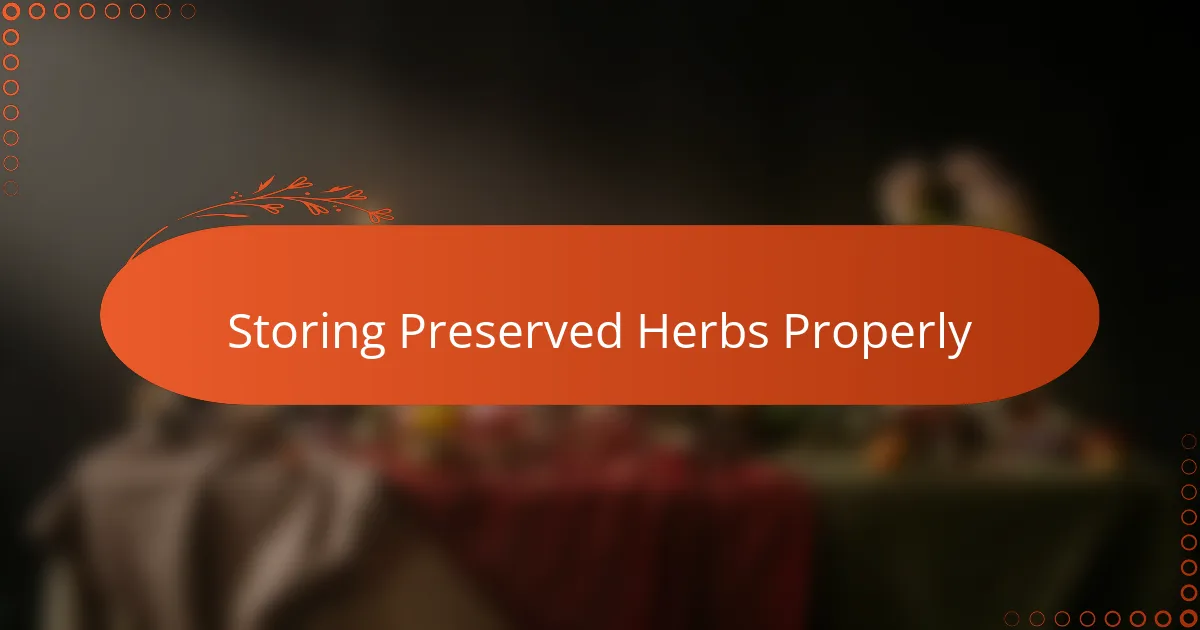
Storing Preserved Herbs Properly
Storing preserved herbs properly has made all the difference in how long their flavor lasts for me. I always use airtight glass jars because they keep moisture out and help the herbs stay potent. Have you ever opened a container only to be greeted by stale, lackluster herbs? That’s usually a sign of improper storage, and it’s such a letdown after all the effort put into preserving them.
Another thing I’ve learned is to keep the jars in a cool, dark place—my spice cabinet works great. Light and heat are sneaky enemies that fade both color and aroma faster than you’d expect. I remember once leaving a jar on a sunny windowsill and regretting it when the herbs mysteriously lost their punch.
Sometimes I label my jars with the date I preserved the herbs; it’s a simple habit but one that saves me from guessing how fresh my stash really is. Do you track how long your herbs have been stored? It’s reassuring to know when it’s time to refresh your supply and keep your cooking vibrant.
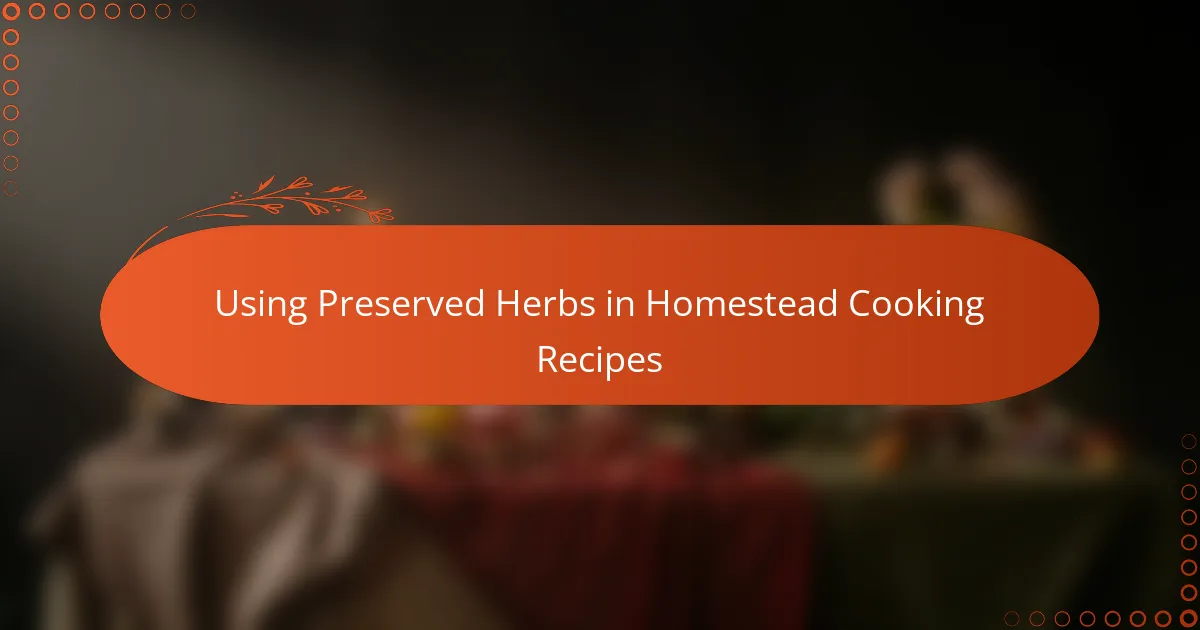
Using Preserved Herbs in Homestead Cooking Recipes
Using preserved herbs in homestead cooking feels like unlocking a secret ingredient that bridges seasons. I’ve noticed how a pinch of dried rosemary or a sprinkle of crushed thyme instantly deepens the flavor of soups and stews, making those dishes taste just as vibrant as when fresh herbs are in season. Have you ever added preserved herbs to a simmering pot and marveled at how they revive a recipe?
When I cook with my frozen or dried herbs, timing is everything. Adding them too early can sometimes dull their aroma, while tossing them in towards the end of cooking preserves that fresh, garden-like brightness. Through trial and error, I’ve found that understanding how each herb behaves when cooked has truly elevated my meals.
One surprising joy for me has been using herb-infused oils made from my preserved stash to finish dishes. A drizzle of basil-infused oil over roasted potatoes or a splash of sage vinegar on salad greens brings a burst of flavor that feels like a little taste of my garden harvested fresh that day. Have you tried turning your preserved herbs into something liquid like that? It’s a game changer in homestead cooking.
